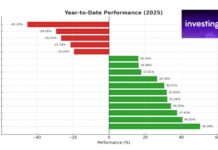Ripple has taken a significant step in the world of digital finance by partnering with the Bank of New York Mellon (BNY Mellon) to establish support for its stablecoin, RLUSD. This collaboration highlights a growing trend among major players in the financial industry to embrace stablecoins. Have you ever wondered how these digital currencies are changing the landscape of transactions and reserves? In this article, we’ll explore the implications of Ripple’s alliance with BNY Mellon, the role of stablecoins in today’s economy, and the rising interest from large corporations in adopting these innovative financial tools.
BNY Mellon: A Key Player in Digital Finance
Bank of New York Mellon has emerged as a significant custodian for Ripple’s USD reserves. Established in 1784, BNY Mellon is the oldest bank in the United States and has reinvented itself in recent years by creating a dedicated digital asset division in 2021. This unit focuses on providing services related to cryptocurrencies, reflecting the bank’s commitment to staying relevant in a rapidly evolving financial landscape.
As part of the agreement with Ripple, BNY Mellon will manage the reserve assets backing RLUSD. This includes overseeing funds during stablecoin conversions. By leveraging BNY Mellon’s expertise, Ripple aims to enhance its regulatory standing and attract more institutional interest in RLUSD.
The Growing Appeal of Stablecoins
Stablecoins are becoming increasingly popular as they offer a bridge between traditional finance and the digital economy. These cryptocurrencies are designed to maintain a stable value against fiat currencies, making them an attractive option for businesses and consumers alike.
Many corporations, including giants like Amazon, Walmart, and Apple, are now exploring the potential of stablecoins for payment solutions. This shift signifies a broader acceptance of digital currencies in everyday transactions.
Ripple’s Strategic Moves for Regulatory Compliance
In a bid to solidify its position in the financial market, Ripple is seeking a U.S. national bank charter. This would enable the company to maintain reserves directly with the Federal Reserve, granting it access to a robust payment infrastructure. Such an initiative could further legitimize Ripple’s operations and expand its influence in the digital currency sphere.
This pursuit for regulatory clarity and institutional support is crucial for Ripple, especially as the demand for stablecoins rises. With more companies looking to integrate these digital assets into their operations, Ripple’s strategic positioning could serve as a model for others in the industry.
XRP Trends: What Does the Future Hold?
The market dynamics for XRP are showing promising signs of growth. Recent trading patterns indicate a bullish trend, with XRP breaking through significant resistance levels. As the price stabilizes and forms a new support level, intraday buyers may continue to push the value higher.
Investors are closely monitoring these developments, as price movements reflect broader sentiments in the cryptocurrency market. Staying informed about these trends can empower you to make better investment decisions.
By understanding the implications of Ripple’s partnership with BNY Mellon, the increasing popularity of stablecoins, and the evolving market dynamics for XRP, you can gain valuable insights into the future of digital finance. The landscape is changing rapidly, and staying updated is essential for navigating this exciting new era.




